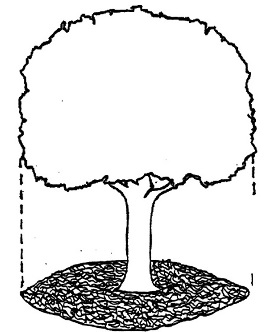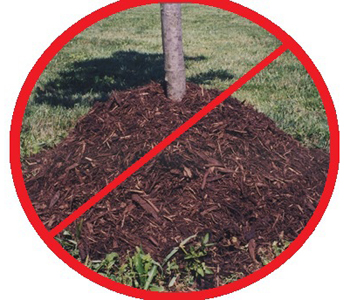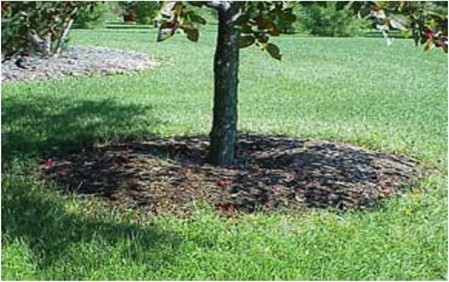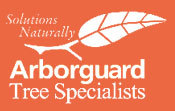Mulch the Right Way
Mulches provide many benefits for trees and shrubs: moderate soil temperatures, reduce soil moisture loss, reduce soil compaction, provide nutrients, improve soil structure, keep mowers and string trimmers away from the trunk. These benefits result in more root growth and healthier plants. When applying mulch, the following guidelines should be observed:
|
|||||||||||||||||||||||||
Tips for Homeowners
Many homeowners choose to mulch because they enjoy the well-cared-for look it gives their landscape. But, they may not realize they are also providing many benefits for their trees. With mulch, the result can be a better growing environment for trees and their roots.
 Homeowners should be aware that, generally, the root system of a tree spreads out not down. The roots of most trees extend out a significant distance from the trunk. Most of the fine absorbing roots of trees are located within inches of the soil surface. These shallow roots are essential for taking up water and minerals for trees, and they require oxygen to survive. A thin layer of mulch, spread widely, can provide a healthier environment where these roots grow.
Homeowners should be aware that, generally, the root system of a tree spreads out not down. The roots of most trees extend out a significant distance from the trunk. Most of the fine absorbing roots of trees are located within inches of the soil surface. These shallow roots are essential for taking up water and minerals for trees, and they require oxygen to survive. A thin layer of mulch, spread widely, can provide a healthier environment where these roots grow.
Properly applied mulch provides many benefits to the health of a tree. Unlike trees growing in a forested environment, urban trees are not typically planted in an optimal environment for root growth and mineral uptake. Typically, urban environments are harsher with poor soil conditions and large fluctuations in moisture and temperature. Applying mulch can help reduce the stress of such conditions through these benefits:
|
Organic or Inorganic
Mulches are either organic or inorganic material mixtures that are placed over the soil surface around the base of a tree. Mixtures consisting of various types of stone, rock, pulverized rubber, and other materials are labeled as inorganic. Because these types of mixtures do not decompose, they need replenishing less often. However, this also means they do not improve soil structure, provide nutrients, or add organic materials to the soil. Inorganic mulches do still provide other benefits such as insulation, and protection.
Organic mulches consist of wood chips, pine needles, bark, leaves, and other products derived from plants. These mulches decompose, thus are very beneficial in improving soil quality by replenishing nutrients. They do, however, require more maintenance because decomposition creates the need to replenish more often.
Dos and Don'ts
In order for mulch to be beneficial, it must be applied correctly. All things in moderation should be a homeowner’s mulching motto. (Check out our Tree Owner's Manual for more information.) As beneficial as mulch is, too much can be harmful in more ways than one. Too much mulch can create excess moisture that may lead to root rot. Other problems created by over mulching include insect and disease problems, weed growth, sour smelling planting beds, and chewing rodents.
|









